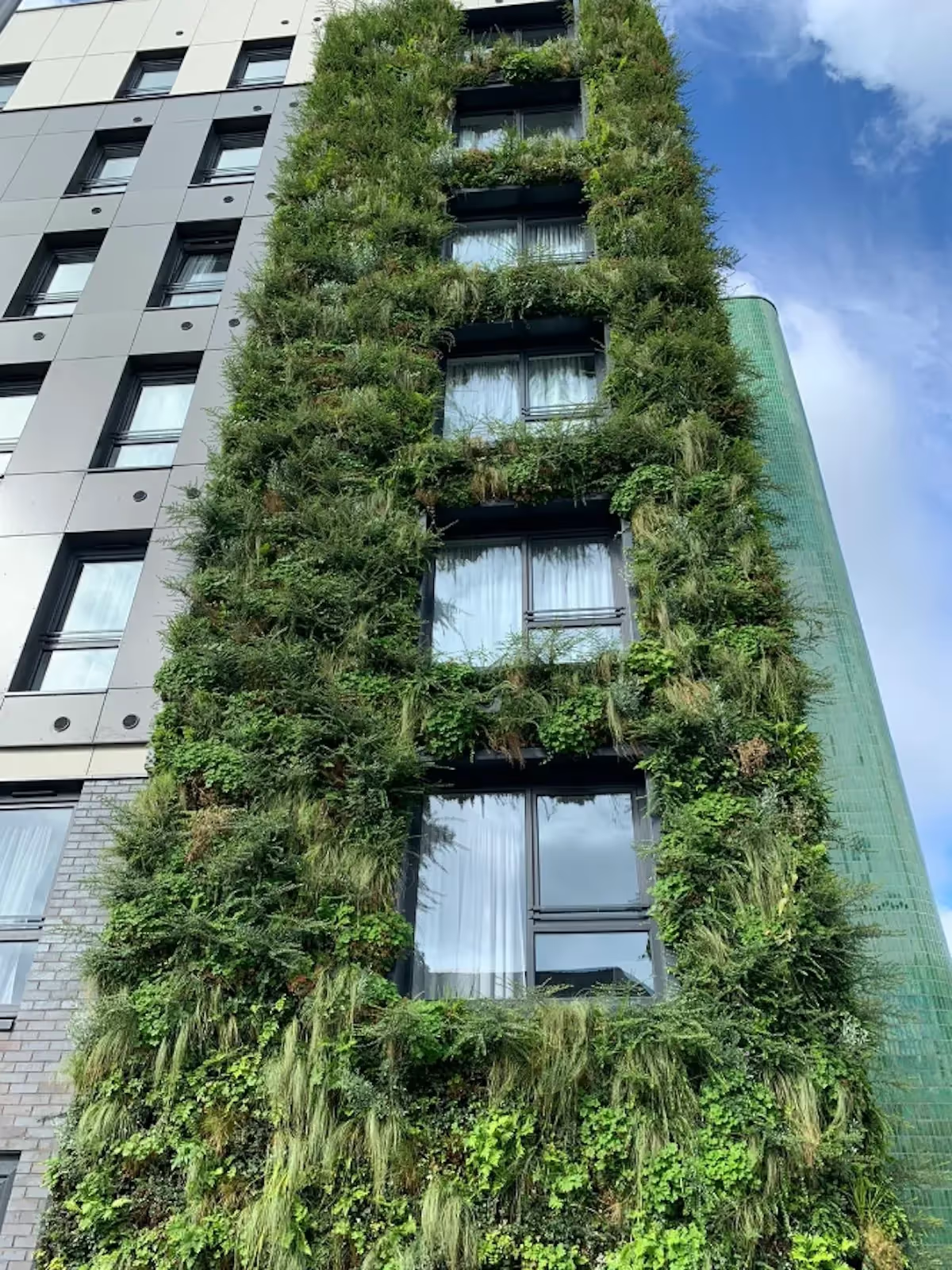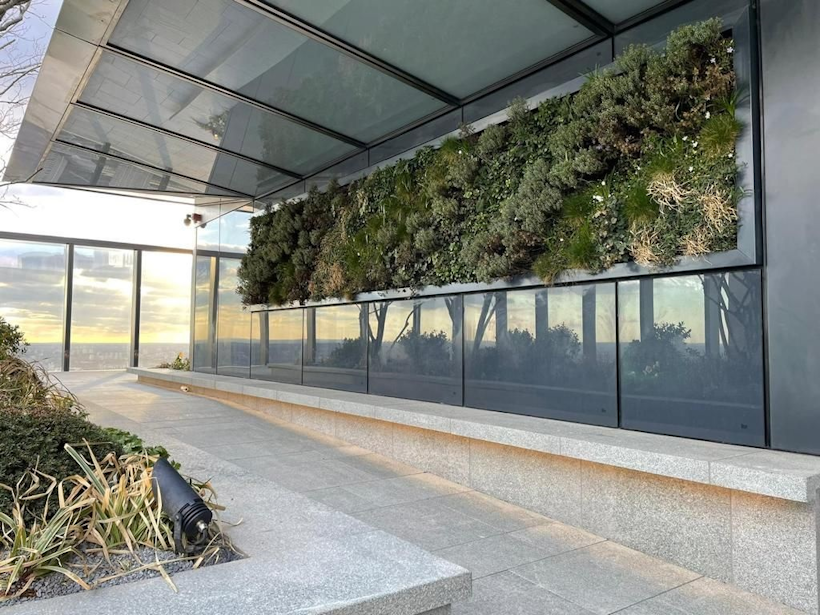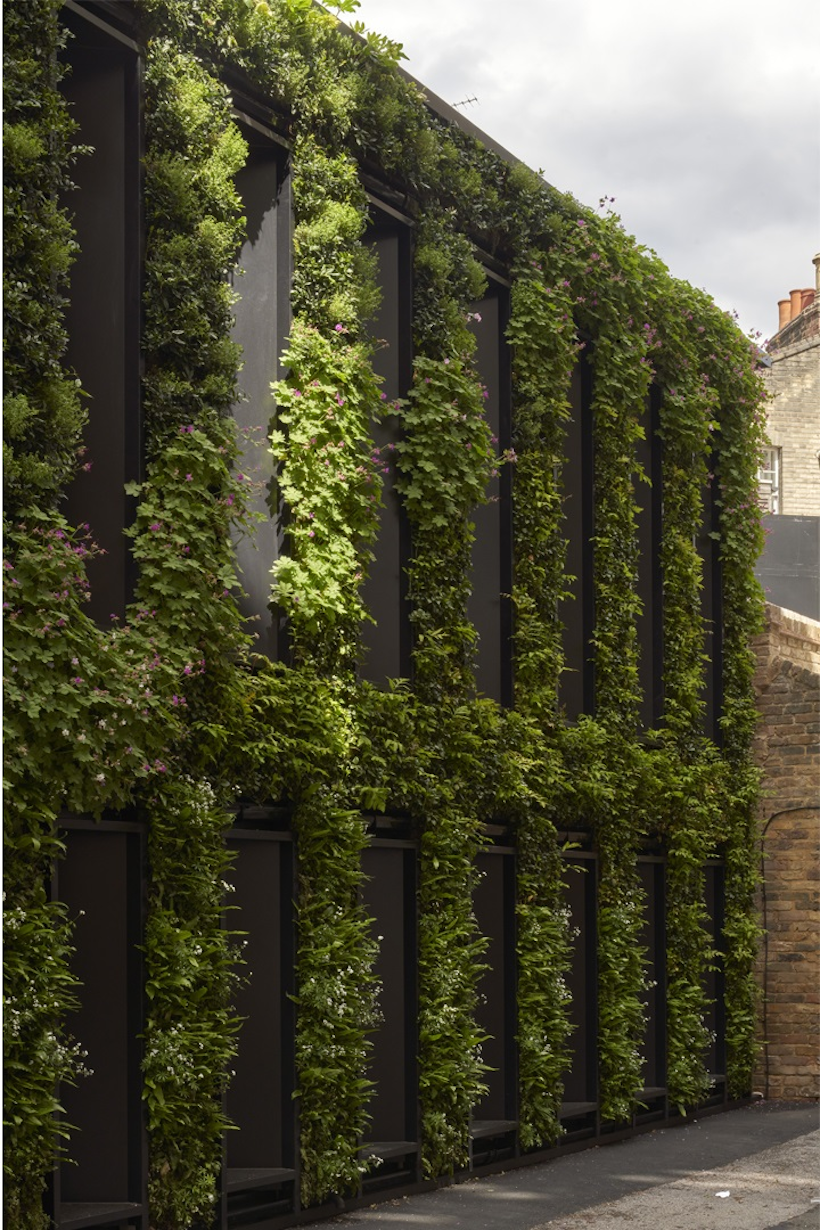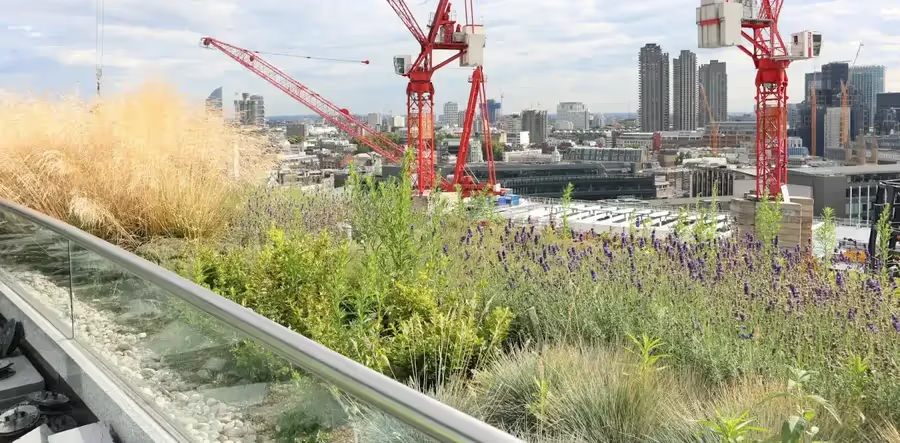Why expert living wall maintenance matters

Why expert living wall maintenance matters
We have shared many guides on how to maintain your living wall from season to season, but this time we have spoken to our Head of Maintenance, Deimantas, to understand what it truly takes to maintain green infrastructure.

From identifying pests before they become a problem to managing irrigation systems and tailoring care to each plant species, expert maintenance goes far beyond occasional watering and trimming. Living walls are complex ecosystems, and without the right knowledge and attention, they can quickly shift from vibrant displays to struggling patches of greenery.
In this blog, we will share some of the common challenges faced, why shortcuts rarely work and how trained professionals keep these vertical gardens thriving.
What makes living wall maintenance so demanding?
Living wall maintenance is demanding because you are managing a vertical ecosystem that needs consistent care in an unnatural orientation. Here are the main reasons it’s labour-intensive:
- Irrigation challenges: Water distribution can become uneven if the irrigation system is not properly set up, which means top plants can dry out, and plants on the bottom can flood.
- Nutrient needs: Limited soil means the living wall plants need regular feeding and drainage checks.
- Plant health: Dense growth invites pests and disease, with unchecked problems spreading fast.
- Aesthetic upkeep: Regular cutting and shaping is needed to keep designs sharp and the plants in balance.
- Environmental stress: Varying light, wind and humidity levels across the wall can add complexity.
In short, living walls need consistent, skilled care to stay healthy and visually striking.

Trust the experts: Why plant knowledge is non-negotiable
Keeping a living wall healthy isn’t just about watering, it is about understanding how plants behave, interact and respond to their environment. This is where true expertise makes all the difference. In this section, our Head of Maintenance shares insights into why true horticultural expertise is the foundation of successful, long-term living wall care.
1. Every plant has its own needs
A living wall is made up of multiple different plants and knowing those plants’ needs is essential for keeping it thriving.
From light and humidity to spacing and feeding, each species in a living wall has specific requirements. Without the right care, even one stressed plant can impact the health of the entire wall.
A well-trained expert knows how to balance these needs and adjust care accordingly.
2. Spotting problems before they spread
Experienced maintenance teams don’t just react to issues, they prevent them. Identifying early signs of pests, disease or nutrient deficiencies is key to avoiding large-scale plant loss.
Catching problems early can save both time and money.
3. No guesswork
Choosing the right plants for the right location is a science. Experts understand how species will grow, how they will look over time and how they interact with others in the same space. This ensures your living wall stays full, healthy and visually balanced throughout the seasons.
4. Not just a one-and-done installation
Some providers install a living wall and walk away, leaving plants to fight for survival. Without proper knowledge and follow-up care, these walls quickly decline and become a potential fire liabili.
An expert-led team, like our maintenance team at Viritopia, provide not just maintenance but knowledge and stewardship, ensuring long-term success.
When it comes to living walls, plant knowledge is essential to ensure they stay at their full potential. Trusting the right people means protecting your investment and keeping your wall thriving seasons after season.

Catching problems early: Pest control and plant replacement
Frequent and seasonal maintenance is still important for keeping your living wall happy, such as:
- Removing debris and dead plants
- Cutting and shaping plants
- Fertilising the plants
- Inspecting the wall and irrigation system
Living walls are dense, layered ecosystems, making them perfect breeding grounds for pests and diseases if not closely monitored. That is why early detection and quick intervention are critical to keeping them healthy.
- Prevention first: Regular inspections are the frontline defence. Skilled maintenance teams know what to look for, such as subtle leaf damage, discolouration or changes in growth. Spotting these signs prevents a small issue from turning into a wall-wide infestation.
- Biological control: More teams are using environmentally friendly methods like biological control, introducing beneficial insects to combat harmful ones. It is effective and helps avoid chemical sprays but requires detailed plant knowledge to avoid disrupting the balance.
- When replacements are needed: Even with the best care, some plants may decline. Replacing them quickly keeps the wall looking full and healthy. As well as preventing gaps where pests of disease can take hold. However, it is not just swapping one plant for another. Experts match species based on the wall’s microclimate, light and growth pattern.
- Minimising long-term damage: Early action reduces the risk of losing large sections of a wall, which is far more costly to repair. Consistent monitoring and knowing exactly what to look for is what separates routine care from reactive firefighting.
Green wall maintenance frequency: One size doesn’t fit all
When it comes to living walls, Deimantas shared that maintenance frequency isn’t a one-size-fits-all situation. Different plants, designs, project size and environments all demand tailored care schedules to keep the green space healthy and looking its best.
- Low-maintenance plants: Some species are tough and can thrive with minimal attention. Sometimes only needing a check-up or trimming once a year.
- Moderate-maintenance plants: Many plants require more regular care, such as monthly watering, feeding and pruning to stay vibrant.
- High-maintenance plants: Certain delicate or fast-growing species demand frequent visits to manage growth, prevent disease and maintain appearance.
The design of the living wall also plays a big role. Walls with a diverse range of plants will need more nuanced care, while simpler setups might get by with less frequent maintenance.
Ultimately, the key is understanding the specific needs of your plants and adjusting the schedule accordingly. This approach helps prevent under or over-care, both of which can harm the plants and drive up costs.
Regular, expert maintenance tailored to your wall’s unique requirements ensures it remains a thriving, beautiful ecosystem all year round.

Why expert maintenance is the key to long-term viability
Living walls are more than just decorative features, they are complex, living ecosystems that require ongoing, skilled care to thrive. Expert maintenance is essential as it combines deep plant knowledge, proactive problem-solving and tailored care to meet the unique needs of each installation. Without this expertise, plants can quickly fall into survival mode, leading to poor health, increased pest problems and costly replacements.
By trusting trained professionals, you protect your investment and ensure your living wall remains a vibrant, sustainable and visually stunning part of your space for years to come. Expert care not only preserves plant health, but also supports environmentally friendly practices that benefit the entire ecosystem.
In essence, the key to a thriving living wall isn’t just planting, it is the ongoing dedication and knowledge of those who maintain it. When it comes to green infrastructure, expert maintenance is indispensable.
Ready to keep your living wall thriving?
If you are looking for expert guidance or maintenance services tailored to your living wall, don’t hesitate to reach out. Our team at Viritopia is here to help your living walls flourish season after season.
Contact us today to discover how we can bring your green space to life.
Explore more insights
Discover the latest in green infrastructure

Vanguard Logistics Park (Longmore) Featured in RIBA Commercial Directory 2025

Green Roof Advantages & Disadvantages

Design with meaning: How office living walls reflect your brand

